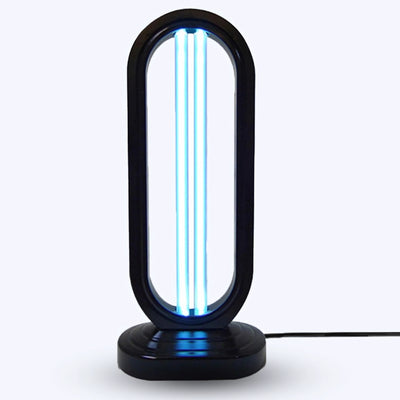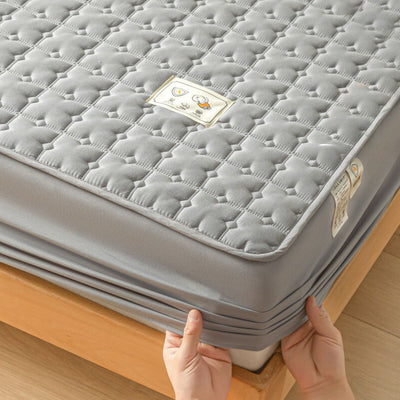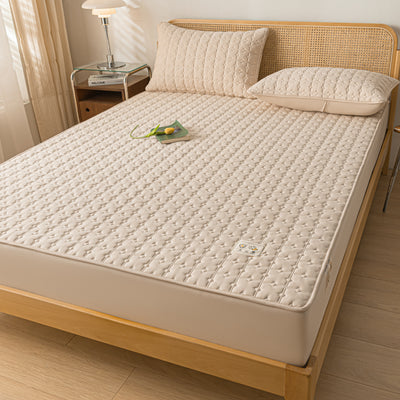As the crisp air and golden leaves of autumn arrive, they bring with them certain hidden hazards for dogs—seasonal allergies. Many dog owners are surprised to learn that just like humans, dogs can suffer from allergies during the autumn. Two common culprits? Pollen and mould. Here's how these allergens can affect your dog and what you can do to help.
How Autumn Pollen Affects Dogs
During the autumn months, several plants release pollen that can trigger allergic reactions in dogs. Common sources include ragweed, sagebrush, and tumbleweed, which are prevalent in many regions during autumn. When your dog sniffs around or plays in areas with these plants, they may inhale pollen particles, leading to allergic responses.

Symptoms of Pollen Allergies in Dogs:
- Itchy Skin: One of the most common signs of a pollen allergy is itching. Dogs may scratch excessively, lick their paws, or rub their face against furniture or the ground.
- Red, Irritated Skin: You may notice redness, bumps, or inflamed areas, particularly around the face, paws, and belly.
- Sneezing and Watery Eyes: Just like humans, dogs can develop respiratory symptoms like sneezing, a runny nose, or watery eyes when exposed to pollen.
- Ear Infections: Dogs prone to allergies often develop secondary ear infections, which can cause discomfort and a foul odour from the ears.
How Mould Affects Dogs in Autumn
As leaves begin to fall and pile up, they start to decompose, providing a perfect breeding ground for mould spores. Mould can also be found in damp areas around homes, particularly in basements, garages, and gardens. When your dog comes into contact with these spores, either by inhaling them or walking through mouldy areas, allergic reactions can occur.

Symptoms of Mould Allergies in Dogs:
- Coughing or Wheezing: Mould spores can irritate your dog's respiratory system, causing them to cough, wheeze, or have difficulty breathing, especially if they have pre-existing conditions like asthma.
- Skin Irritation: Similar to pollen allergies, mould can cause itchy or irritated skin. You may see your dog scratching more often or licking certain areas of their body.
- Nasal Discharge: Persistent runny nose or nasal congestion can be a sign of a mould allergy, especially if your dog spends time in damp, mould-prone areas.

How to Help Your Dog with Autumn Allergies
While you can't control the changing seasons, there are several steps you can take to help manage your dog's allergy symptoms during autumn:

A. Limit Outdoor Exposure
- On days with high pollen counts, limit your dog’s time outside, especially in areas with lots of weeds or decaying leaves. You can check local pollen forecasts to help plan walks.
- Avoid letting your dog roll around in leaf piles, as mould and pollen can easily accumulate in these areas.

B. Clean Your Dog’s Paws and Coat After Walks
- Wipe down your dog’s paws, fur, and face after outdoor walks to remove pollen and mould spores that may have attached to their coat. A quick rinse or using a Paw Cleaner Cleanse Cup can help minimise exposure, keeping allergens at bay.
- Regular baths with a gentle, hypoallergenic shampoo can also help remove allergens from your dog’s skin and coat.

C. Keep Indoor Air Clean
- Use air purifiers or keep windows closed on high pollen days to reduce allergen exposure indoors. Make sure your home is well-ventilated and free of moisture to prevent mould growth.
- Clean your home frequently, especially in areas where your dog spends time, to reduce indoor allergens.

D. Consult Your Veterinarian
- If your dog shows persistent signs of allergies, consult your vet. They may recommend antihistamines, topical treatments, or special diets to manage symptoms.
- In more severe cases, allergy testing can be performed to pinpoint specific triggers, and your vet might prescribe allergy shots (immunotherapy) to help desensitise your dog to allergens.
Watch for Secondary Infections
- Dogs with allergies are more prone to secondary bacterial or yeast infections, especially on their skin and in their ears. If you notice unusual redness, odour, or discharge, seek veterinary care promptly.

Final Thoughts
Autumn allergies can be uncomfortable for dogs, but with the right care, you can manage their symptoms and keep them happy and healthy throughout the season. By recognising the signs of pollen and mould allergies and taking proactive steps to minimise exposure, you can help your dog enjoy the beauty of autumn without the itch or irritation.






















